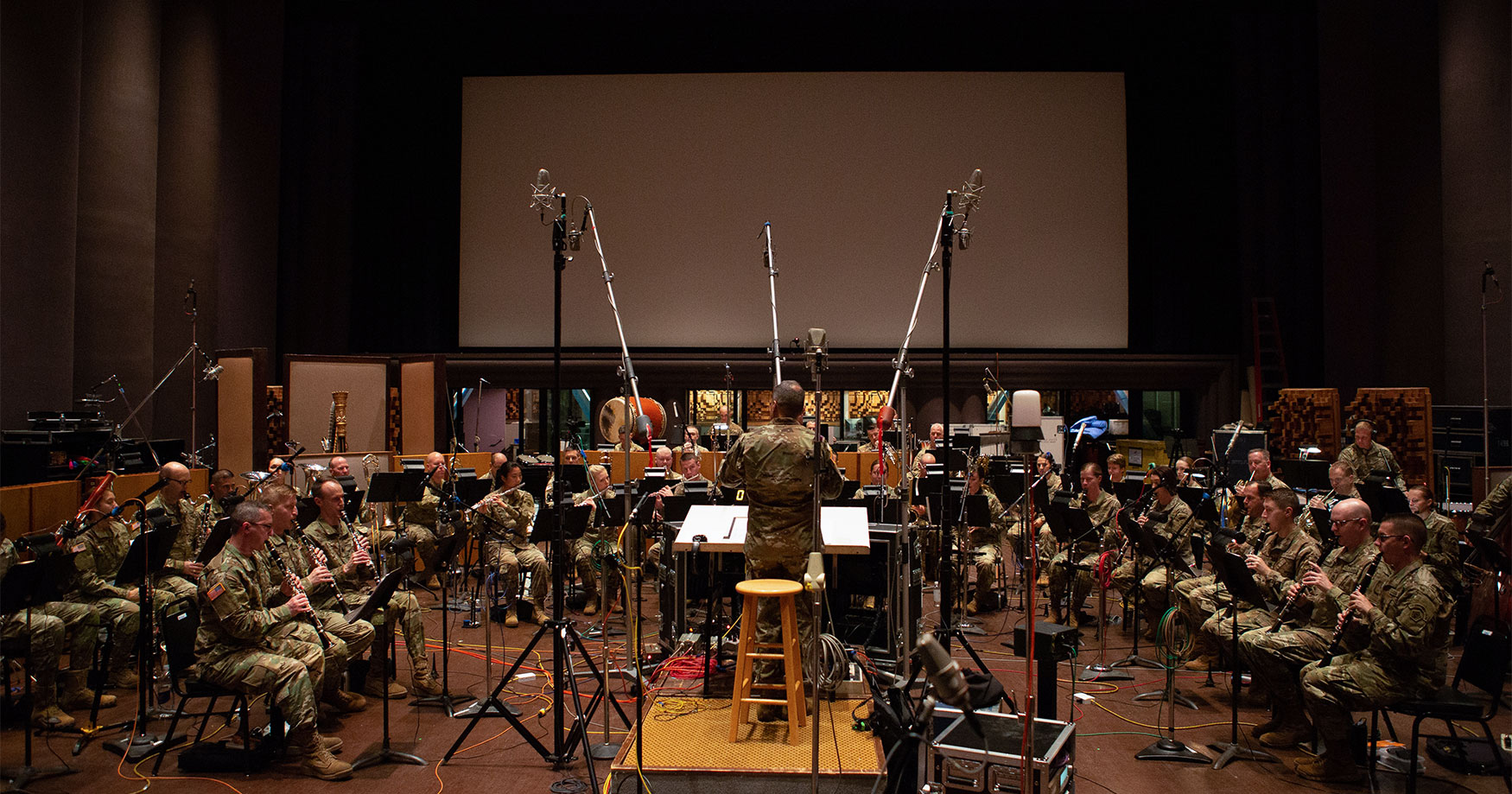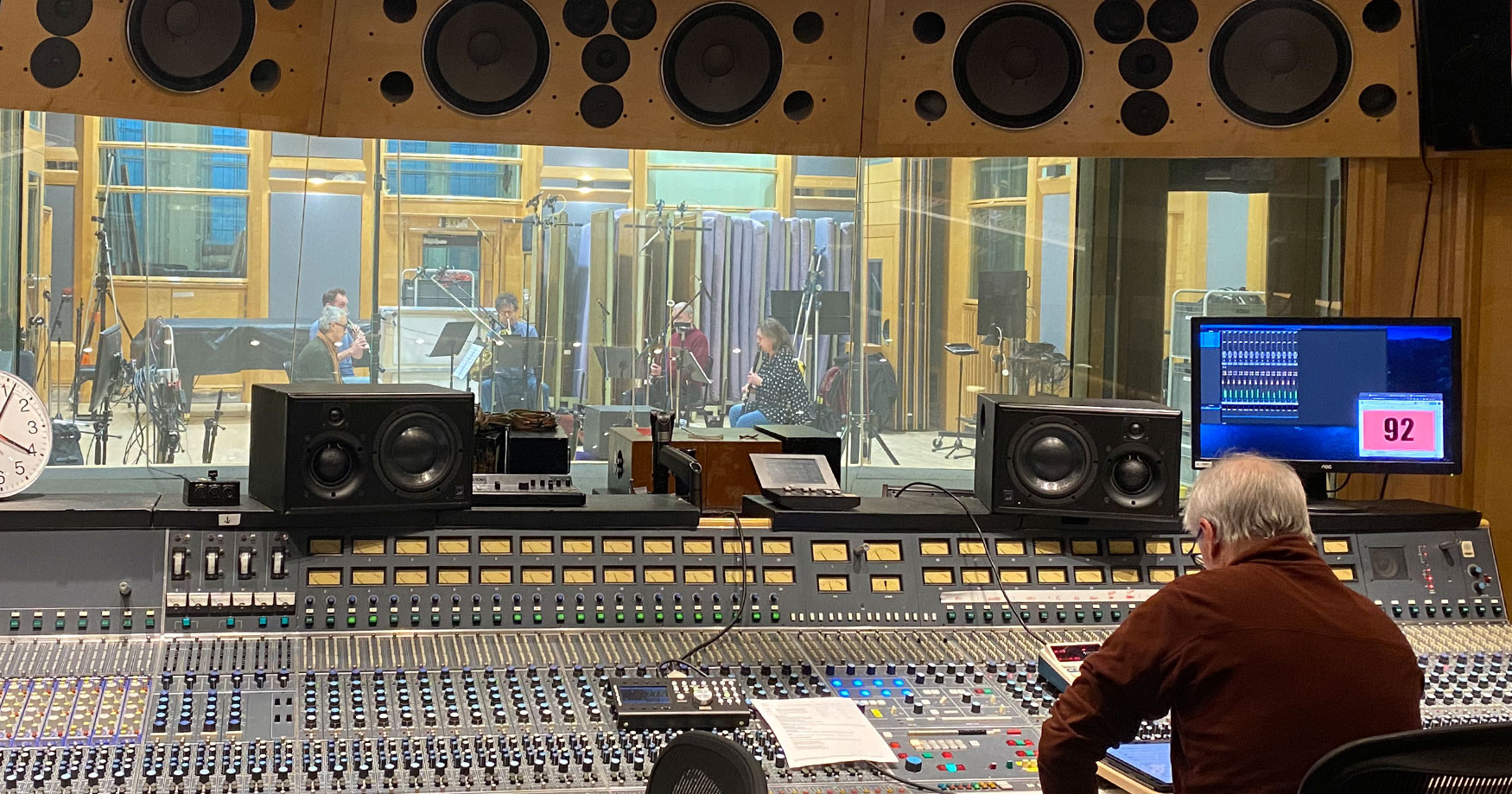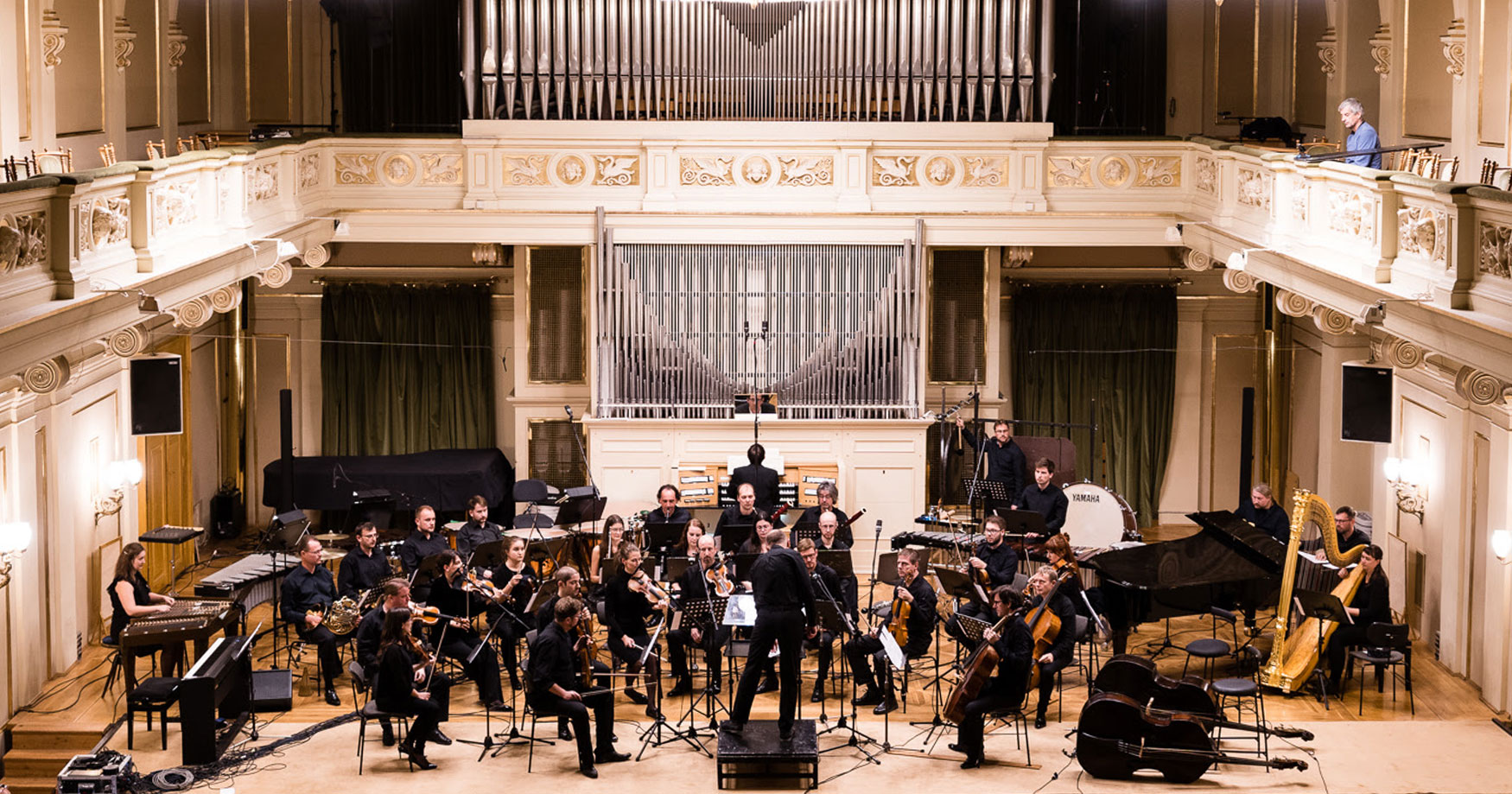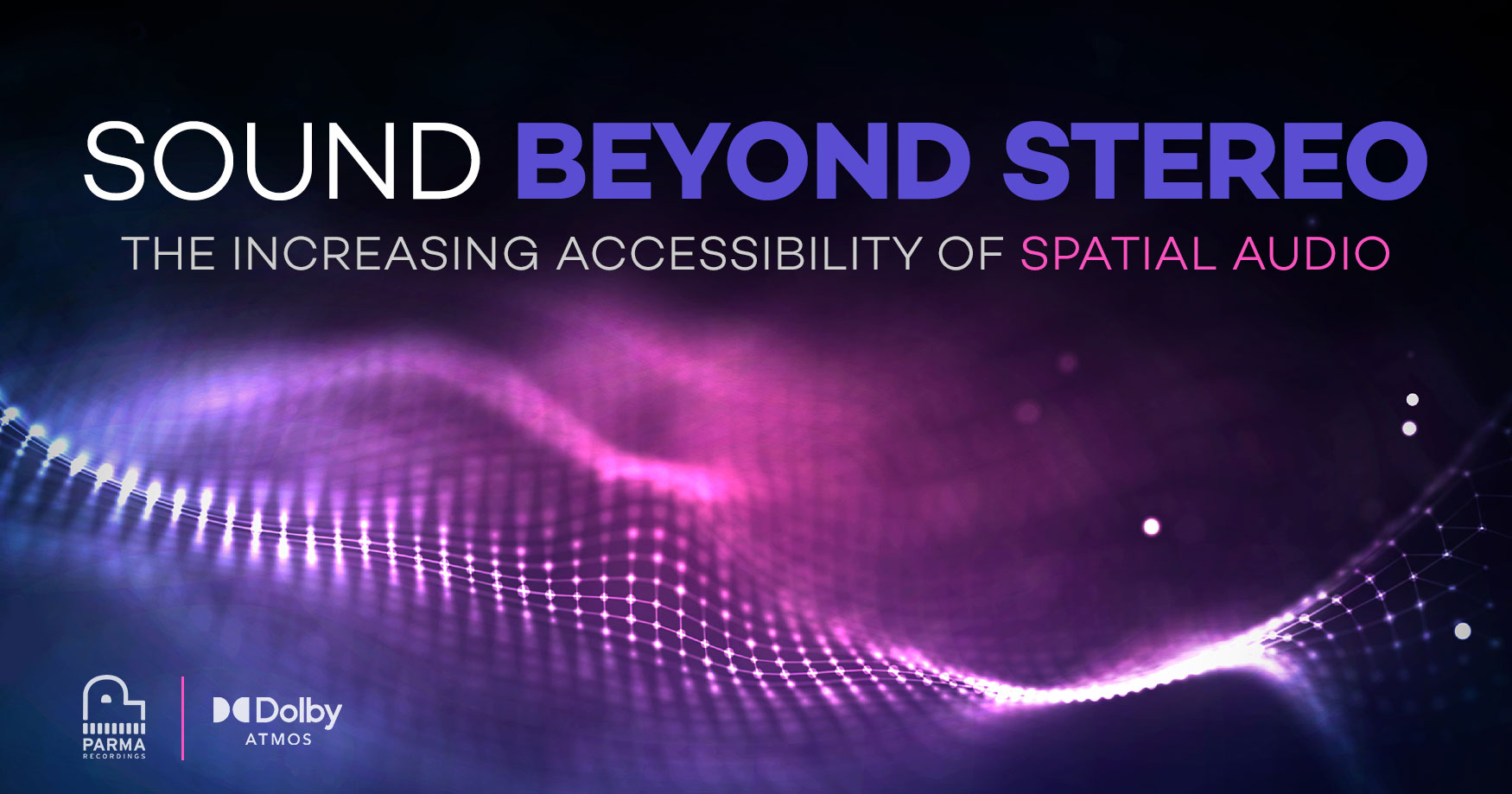Spatial audio has long been a key component of visual and audible entertainment, most commonly used in movie theaters and immersive music setups for enhanced consumption. These days, spatial audio is becoming more accessible with compatible audio hardware within consumer reach, and PARMA is utilizing spatial audio mixes to create immersive soundscapes beyond stereo.
Since Navona Records’ SOUNDTRACK OF THE AMERICAN SOLDIER by the United States Army Field Band made its debut in August 2020, the company as a whole has gravitated towards incorporating spatial audio features on its projects. The first of its kind for Navona, the album was monitored and mixed by multiple GRAMMY-winning engineer Leslie Ann Jones in Dolby Atmos®, surround sound, and stereo, immersing the listener in a multi-dimensional soundscape that creates a deeply meaningful connection to the music and the stories it portrays.

The United States Army Field Band at Skywalker Sound
The album has since received a GRAMMY nomination for Best Immersive Audio Album, with results to be announced in the 2022 GRAMMY Awards. The nomination is the first for the United States Army Field Band, and the album marks the first of many immersive audio albums to be released by PARMA.
Inherited from the movie industry, spatial sound like that heard through Atmos aims to place the audience directly in the picture. In a movie scene, for example, an airplane would sound as if it were flying directly over your head; in music’s case, vocals soar from a mezzanine, or a roaring cymbal roll cascades through a concert hall.
PARMA takes a unique approach in recreating the natural room acoustics a concert-goer would hear at a live concert. By capturing and faithfully reproducing the room acoustics of the world’s most celebrated venues, spatial audio has the capability to transport listeners into the three-dimensional sound field of those exact spaces.
PARMA Senior Producer Brad Michel, who received a Gramophone award for his work in Immersive Audio in 2021, shared his perspective on the benefits of spatial sound:
“The goal is for recordings to not sound like recordings. We want them to foster the experience of being there; whether being directly on stage or in the best seat in the hall — wherever you would want to be surrounded by music.”
Senior Producer Brad Michel
In the past, spatial audio required extensive time and knowledge to access, but is becoming more widely available to the public through consumer friendly products and new mixing techniques.
Dolby Atmos’s emerging prevalence in music is opening the doors to immersive audio to nearly every consumer with its wide range of compatibility. Atmos isn’t mixed to a specific speaker orientation like traditional 5.1 surround sound. Rather, Atmos directs mix tracks where to appear in space, making a mix that’s congruent with supported sound bars and open-back headphones, negating the need for a complex home theater-esque speaker setup.

Brad Michel at AIR Studios London
“It’s remarkable what can happen with what you have already,” says Michel.
In 2021, Apple Music and Amazon Prime announced their adoption of spatial audio distribution, opening the floodgates to more than 130 million subscribers, and casting a wide net for audiophiles and casual listeners alike to experience this technology. As the market for spatial audio expands, new opportunities to utilize its capabilities are sprouting rapidly.
PARMA’s production team is now fully equipped and optimized end-to-end to achieve this for interested artists. At the beginning of 2022, a featured recording opportunity with the Brno Contemporary Orchestra and PARMA was launched for production and release of selected scores both in traditional stereo and in Dolby Atmos immersive audio.

Brno Contemporary Orchestra
While traditional stereo recordings still hold a firm grasp on the music industry as a whole, PARMA Vice President of Special Projects Jeff LeRoy says the sky’s the limit for where spatial audio can take us.
“Reproducing an authentic sense of space is a primary goal in record creation, particularly in acoustic genres like classical and jazz, and is a vital part of communicating the nuance of a composition and its performance. For those that wish to further set themselves apart, take advantage of an emerging market, and take their music to new heights, spatial audio presents a truly artful, meaningful opportunity.”
Vice President of Special Projects Jeff LeRoy



